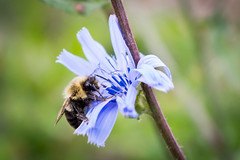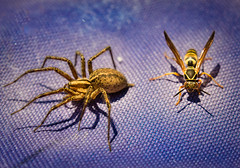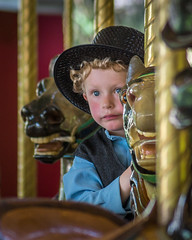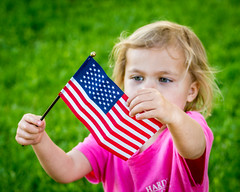Missouri
Dangerously Alluring Beauty

I went for another walk in the Missouri woods with my camera and noticed something new among the thistles.
 This yellow and black spider was strategically positioned and patiently waiting to strike insects who may be attracted to the colorful thistle.
This yellow and black spider was strategically positioned and patiently waiting to strike insects who may be attracted to the colorful thistle.
If you look closely at the image above, it looks like some of the thistle is twisted in strands to the side – giving the spider easier access to any prey that might land on the top of the flower. Is the spider smart enough to make an easier path to the kill or is it just a naturally occurring coincidence? I wonder.
The photo to the right show another spider snugly tucked deep in the strands of the thistle. Waiting…waiting…waiting…
Now that I look at them, maybe I should have waited to see and document what happens. It might have taken a long time with me just a few inches from the blossoms. The spiders are more patient than I am.
You can get a closer look at either photo by simply clicking on them.
Thistles on Display

I took a walk through the woods in Missouri and came across this clump of thistles.
I have a difficult time walking outdoors with my camera and not photographing every flower of color I encounter…even if I have a dozen images of the same kind flower…even when they’re weeds.
Here’s a little of what Wikipedia says about thistles…
Thistle is the common name of a group of flowering plants characterised by leaves with sharp prickles on the margins, mostly in the family Asteraceae. Prickles often occur all over the plant – on surfaces such as those of the stem and flat parts of leaves. These are an adaptation that protects the plant against herbivorous animals, discouraging them from feeding on the plant. Typically, an involucre with a clasping shape of a cup or urn subtends each of a thistle’s flowerheads.
In the language of flowers, the thistle (like the burr) is an ancient Celtic symbol of nobility of character as well as of birth, for the wounding or provocation of a thistle yields punishment.
The thistle has been the national emblem of Scotland since the reign of Alexander III (1249–1286) and was used on silver coins issued by James III in 1470. It is the symbol of the Order of the Thistle, a high chivalric order of Scotland. It is found in many Scottish symbols and as the name of several Scottish football clubs. The thistle, crowned with the Scottish crown, is the symbol of seven of the eight Scottish Police Forces (the exception being the Northern Constabulary). The thistle is also the emblem of Encyclopædia Britannica, which originated in Edinburgh, Scotland. Carnegie Mellon University features the thistle in its crest.
According to a legend, an invading Norse army was attempting to sneak up at night upon a Scottish army’s encampment. During this operation one barefoot Norseman had the misfortune to step upon a thistle, causing him to cry out in pain, thus alerting Scots to the presence of the Norse invaders.
You can see a larger image of the thistles by clicking on them.


















































